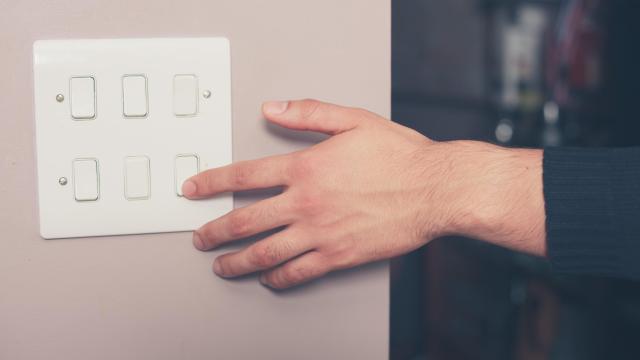We’re officially entering into a period of collective belt-tightening as the economy is going through some stuff. Everything suddenly seems more expensive, wages aren’t exactly shooting up across the board, and old-school money-saving techniques are springing from the depths of our memories. But what if you’ve cut all the corners and still need to save a few more dollars? One of the classic pieces of thrifty advice is to turn off lights you’re not using. On the one hand, this seems obvious: You pay for electricity, so turning things off when you’re not using them makes sense. On the other hand, turning off lights all the time can be inconvenient, and the whole reason we switched to these fancy new lightbulbs in the first place is because they’re supposed to be more energy-efficient. Will walking around a dark house like it’s the 19th century save you enough money to be worth it?
The answer is … complicated. Let’s walk through how much money you can save turning off the lights.
You have to do some maths
So, we’re going to have to crunch some numbers the old-fashioned way. First, you need to gather two figures: The wattage of your light bulb and the price you’re paying for your electricity. The former is listed somewhere on the bulb itself or the packaging it came in. Next, you have to convert those watts into kilowatt hours (kWh). If the bulb is 13 watts, for example, you multiply the power in watts (13) by the number of hours it’s been turned on, then divide by 1,000. So, if your bulb has been on for one hour when you’re doing the maths, your equation will look like this:
(13 * 1) / 1000 = 0.013 kWh
Yay, maths! Now, look at your electric bill and find out how much you’re paying for each kWh of power you suck from the grid. You can find some sample electric bills here if you need help locating this info. Multiply your rate by the number of kWh you just calculated. Say you’re paying 10 cents per kilowatt hour of electricity. Running that lightbulb for one hour costs you 0.0013 cents — yes, way less than a cent. If you’re paying 20 cents per kWh, you’re paying 0.0026 cents.
That’s not a lot of money. If you’re curious, at 10 cents per kWh, leaving that bulb on for 24 hours straight would cost you all of 3 cents. Obviously, less efficient bulbs will cost more. An old-school 100-watt incandescent bulb will cost you cents to leave on for 24 hours straight, for example.
That’s still not exactly a fortune, but let’s consider your whole situation. How many bulbs do you leave burning every day, and for how long? Let’s say there are 10 lights in your house you typically just leave on for eight hours at a time when it’s dark out. Let’s also say half are nine watts and half are 13 watts, and you’re paying 10 cents per kWh.
(13 * 8) / 1000 = 0.104 kWh, which is $0.0104 per day x 5 = $0.052
(9 * 8) / 1000 = 0.072 kWh, which is $0.0072 per day x 5 = $0.036
So you’re spending about 9 cents a day to light up your house. Now, assuming you do this 50 weeks out of the year (we’ll ignore stuff like Daylight Savings Time), you’re spending about $31 to run those lights annually. Is it worth it to run around turning them off?
You might wonder whether the cost comes into play when you have to replace all those bulbs you’re running for eight hours per day. While it’s true that running LED bulbs constantly will shorten their lifespan, they still typically last for years even when used constantly. Your costs for replacing these bulbs will be pretty minimal, especially since you can buy LED bulbs for a little more than a dollar each.
Other considerations for your light costs
Here are a few other things to consider when conserving power and money via light bulb management:
CFL: While the maths for compact fluorescent light (CFL) bulbs is the same, their different engineering means they react differently to being turned on and off. Frequently switching a CFL bulb on and off can reduce its lifespan significantly. The rule of thumb is 15 minutes — if you’re going to need the light again in 15 minutes or less, just leave it on. If you’re going to leave it off longer than 15 minutes, turn it off.
Incandescent: This shows you just how smart it is to switch from those classic incandescent bulbs, as even the lowest wattage you typically find in a home, 40 watts, will cost you roughly $112 annually if you run 10 of them eight hours a day.
The bottom line: You can save some money by turning off your lights, but not a lot. Whether it’s worth it depends entirely on how badly you need every dollar.
Another way to save on electricity costs is to make sure you’re not overpaying with your current provider. The best way to do this is to compare your current costs to other providers in your area. We’ve partnered with a powerful comparison tool called eConnex to help make this process fast and easy. You can even use your most current bill details to get an accurate comparison. Enter your postcode in the box below to get started.
[compare_lite_pedestrian utm_source=”lifehacker”]

Leave a Reply
You must be logged in to post a comment.